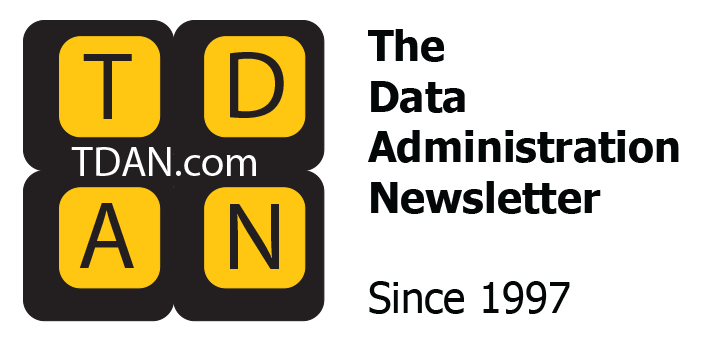
In discussions with data management professionals, conversations often veer toward the technical intricacies of migration to the cloud or algorithm optimization, overshadowing the core business objectives that originally spurred these initiatives. Yet, conversations with chief information officers (CIOs) and chief data officers (CDOs) reveal a relentless pursuit of concrete business value, a metric that determines the allocation of every dollar spent. This focus on value, rather than mere technical achievement, is crucial for data professionals aiming to justify their efforts and expenditures within their organizations.
In my interactions — ranging from engineers and governance specialists to data scientists — I consistently probe into the business objectives underlying their projects and the tangible value they deliver. Yet, the responses frequently circle back to the technical aspects, sidelining the fundamental business impact. This recurrent theme underscores a critical gap in communication that can hinder the alignment of data initiatives with broader organizational goals.
The upcoming book “The Analytics Sandwich” by Pedro Amorim and his colleagues promises to bridge this gap. It equips data management professionals with the language and insights necessary to articulate the business value of their work more effectively. This knowledge not only enhances their current roles but also paves the way for advanced positions such as data product managers, where the ability to merge technical prowess with strategic business insight is invaluable. Such resources are essential for those who wish to elevate their professional narrative from technical implementers to strategic business partners.
Changing Business Milieu
In the 1980s, the prototypical CEO was lauded for the ability to navigate crises and steer the company toward its strategic objectives through sheer experience and acumen. However, the business environment has dramatically transformed, characterized, say the authors, now by what is termed as D-VUCAD: Disruption, Volatility, Uncertainty, Complexity, Ambiguity, and Diversity. This shift means that the old playbook of relying solely on business smarts and intuition is increasingly inadequate in the face of heightened competition and complex global dynamics.
Today, artificial intelligence (AI) and advanced analytics are revolutionizing decision-making processes, empowering leaders at all levels to not just rely on instinct, but to augment it with data-driven insights. Yet, to truly leverage these tools, leaders must also cultivate the capacity to challenge and rethink long-held assumptions. This ability to question and adapt is becoming just as crucial as the insights provided by new technological tools, ensuring decisions are both informed and innovative in a continually changing business milieu.
The Analytics Sandwich
The belief that data and AI initiatives should be inextricably linked to business operations is gaining traction, acknowledging that these technologies are not mere back-office tools but central to achieving core business objectives — whether it’s maximizing efficiency, reducing customer churn, or cutting service costs. Despite the clear goals, a significant hurdle remains: an analytics gap where 93% of the issues are rooted not in technology itself, but in people and processes. This stark statistic underscores the need for organizations to not only invest in advanced analytics, but to also foster a culture and develop workflows that can truly leverage analytical tools to support corporate strategic ambitions.
The authors importantly highlight a crucial aspect of advanced analytics: Its role is not to replace people, but to enhance their capabilities, helping them make smarter, more informed decisions. This aligns with Russell Ackoff’s perspective in “Creating the Corporate Future” — that a business is less a mechanical entity and more a collective of individuals working towards shared objectives. Despite the potential for data, only 32% of companies report seeing tangible and measurable benefits from it. This shortfall underscores a broader need for a “data democracy” — an environment where data is accessible and actionable for all, empowering every team member to contribute to and thrive through organizational change and knowledge development.
The “Analytics Sandwich” model proposed by the authors offers a digestible framework for understanding how data drives business success. At the base of this model are the people within an organization — underscoring the principle that while data and analytics are tools, it’s the individuals who wield them that create value. The top layer consists of advanced analytics, enabling smarter, faster decision-making and making business processes more resilient to shocks like COVID-19. Sandwiched in the middle are the tangible outcomes: from increased productivity and revenue growth to cost reduction, disruptive innovations, and effective product development. This model places a strong emphasis on demystifying advanced analytics for businesses, highlighting the necessity to shift focus from mere data collection to generating impactful business outcomes. Results from Bain Research reinforce this approach, showing significant benefits for businesses that successfully integrate analytics into their operations at every level.
Foundations of Analytics
The guide provided by the authors serves as a comprehensive tutorial on analytics tailored for business users, elucidating the spectrum of analytical categories from descriptive and diagnostic to predictive and prescriptive, each with specific roles and expected outcomes. They delve into essential components such as the significance of high-quality data, the various types of models used, and the integration of General AI to bolster prescriptive analytics. This foundational knowledge is crucial as businesses dedicate significant resources to data quality and preparation, which, while labor-intensive, paves the way for achieving benefits from analytics investment.
Through meticulous data management and analytics, businesses can achieve heightened efficiency, enhance risk management, and harness consumer behavior patterns to tailor marketing efforts. Additionally, the ability to detect and adapt to demand shifts becomes feasible. The authors emphasize the importance of treating data with care, setting clear objectives, and adhering to the principle that robust data is more valuable than clever algorithms alone. By incorporating real-life use cases from various industries, they offer practical insights into the application of these principles, demonstrating the transformative power of well-executed analytics in driving business success.
Scoping Analytics Opportunities
Placing equal emphasis on both people and analytics is vital for meeting business objectives and selecting the right projects — a role suited for data management professionals. This balanced approach is crucial for developing an understanding of analytics, which in turn can illuminate potential opportunities for business customers. The key lies in prioritizing these opportunities meticulously. A structured focus on targeted analytics projects, or even smaller-scale initiatives, can significantly enhance organizational outcomes, as advocated by leading experts in the field.
IT organizations, as the authors argue, should empower business units by putting them in charge of the analytical processes, thereby increasing control and responsiveness. This shift towards a more people-centric approach in data practices echoes the sentiment shared by Jeff McMillian, Chief Data and Analytics Officer at Morgan Stanley. McMillian says, “the biggest challenge we have is not the ability to solve the problem, its figuring out which problem to solve.” The authors outline a four-step process for analytics scoping: Ideation, Screening, Characterization, Prioritization. This process guides organizations to systematically addressing the most impactful issues.
Managing Analytics Projects
The authors outline a comprehensive analytics project management cycle designed to streamline the process from conception to execution. This cycle begins with “Analytics Problem Framing,” where the key issues are identified and defined. It proceeds with “Data Collection and Treatment,” ensuring that the data used is accurate and relevant. “Methodology Selection and Solution Development” follows, where the appropriate tools and techniques are chosen to develop the solution. The next phase, “Solution Validation and Model Deployment,” involves rigorous testing to validate the model before it goes live. Finally, the “Model Lifecycle” phase manages the model’s performance over time, ensuring it remains effective in changing conditions. This structured approach not only enhances the effectiveness of analytics initiatives, but also ensures they are deeply aligned with organizational goals and adaptable to future needs.
Let’s now dig into the analytics project management cycle and its six meticulous phases. During the “Analytics Problem Framing” phase, the focus is on clearly defining the problem statement, outlining solution requirements, and acknowledging any operational constraints, setting a solid foundation for the project. Moving to “Data Collection and Treatment,” this phase involves identifying necessary data sources, executing data acquisition, and engaging in thorough data cleansing and summary, which are crucial for refining both business and analytic problem statements.
In the “Methodology Selection and Solution Development” phase, an appropriate analytic approach is chosen — aligning with the project’s goals — and tools are selected to ensure convergent development. Finally, the “Solution Validation and Model Deployment” phase involves rigorous analytical testing and business validation, ensuring that the system requirements are robust for production and that deployment is smoothly facilitated. These detailed steps not only optimize the efficacy of the analytics initiative, but also ensure it is robust and responsive to the business’s evolving needs.
Parting Words
“The Analytics Sandwich” offers an invaluable framework for data management professionals wanting to grasp the broader implications of their work. By delving into this model, these professionals not only comprehend the ‘why’ behind their daily tasks, but also identify areas where they can deliver enhanced value. This holistic perspective empowers them to see their pivotal role in the larger process of transforming data into strategic insights, fostering a more integrated and impactful approach to data management within their organizations.
